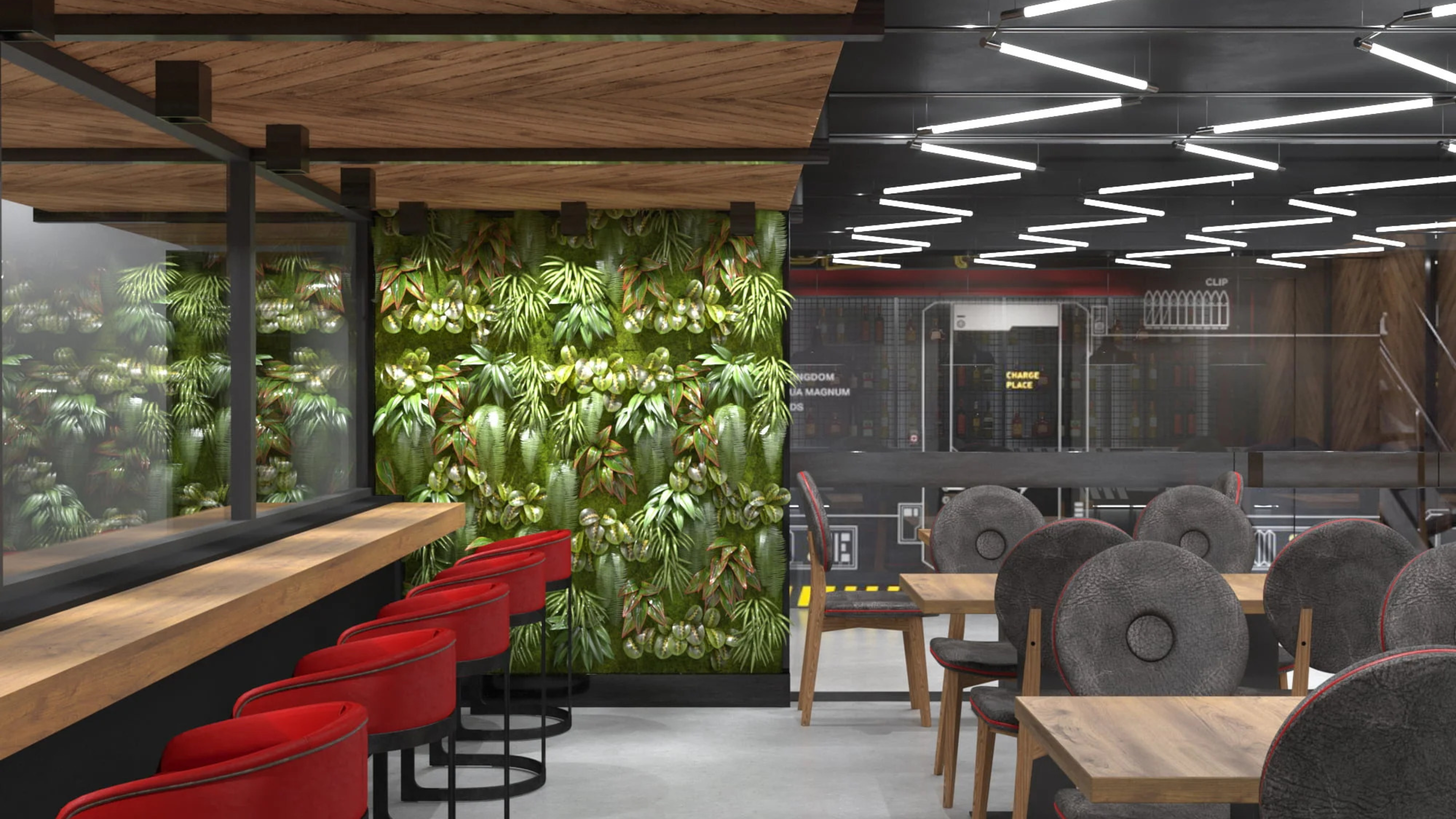
Plants are an integral component of biophilic interior design, which is based on the interaction between humans and the natural environment. Here are the key factors that influence the atmosphere of an indoor space.
Impact on air quality
In biophilic design, plants play a key role because they not only add aesthetic value to a space but also act as natural filters and are capable of absorbing harmful substances of various origins (a study by the University of Colorado in 2005). These substances include formaldehyde, benzene, and trichloromethane, which can be emitted from furniture, carpets, and other materials and can cause various health problems, such as headaches, irritability, allergic reactions, etc. Additionally, plants can improve the humidity of the air, which often becomes too dry in indoor spaces, especially during the heating season.
Noise reduction
Plants also play a role in reducing the level of noise in a room. They can absorb sound waves and reduce echoes in large open spaces. Studies have shown that having plants in a room can reduce noise levels by 5-7 decibels. This can be especially useful in rooms with many people or where there is a lot of equipment that emits noise. A living plant wall, which we used in our “Ibis Tier” case, is well-suited for this role. It also adds a natural touch to the technogenic interior of a café in a shooting range.
Impact on mental health
Plants also have a psychological impact on us. The presence of greenery in indoor spaces lowers stress and anxiety levels, increases mood, reduces fatigue and feelings of depression. Studies show that having plants indoors can decrease aggression levels and improve concentration and productivity. According to “The Human Spaces Report: The Global Impact of Biophilic Design in the Workplace“, people working in spaces with natural elements report a 15% improvement in well-being, 6% increase in productivity, and 15% increase in creativity compared to those working in environments without natural elements.
Role in interior design
Incorporating plants into the design of public spaces can become a key element that adds uniqueness and character to the interior. Proper integration of plants into the interior can make the space more cozy and eco-friendly. Some studies indicate that plants in public interior spaces can increase foot traffic, improve customer mood, and encourage longer stays.
Therefore, biophilic design using plants is beneficial for the health and well-being of people who work or relax in such spaces. Plants also provide optimal air quality and reduce noise, which contributes to an increased level of comfort.

